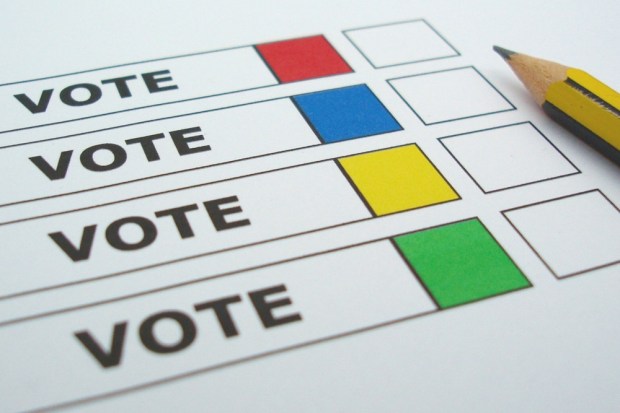Another Primary, Another Look At How SMBs Are Doing There

Oh, what a difference a week can make.
Today (March 8), we open up to another Tuesday and another run of primary elections. And while, granted, it’s not exactly a “Super” Tuesday (or Saturday), the day will likely not want for drama — at least on the Republican side.
While the notion of “anybody but…” is not exactly an unfamiliar part of politics for regular watchers — “anybody but Bush,” “anybody but Obama” have been popular refrains on and off for the last 16 or so years — generally speaking, it is usually a notion that is directed to the other party. This time around, though, things are a little different. Some segments of the Republican Party have taken on “anybody but Trump,” while others have adopted “nobody but Trump,” meaning that, in the last week, Republicans have paused their usual battle for superiority with the Democrats to have a civil war with each other.
It’s been … well … “colorful” is one word for it.
The question is: What are voters going to do about it? Today, we get yet another run of primaries to find out the answer to that question.
And while Team PYMNTS loves a good, old-fashioned brawl as much as anyone, the natural nerds in us would really like to talk about the economy, store front businesses and what the world looks like today for the small shops and outfits that line our main streets and side streets. One, because it is interesting, and two, because it’s instructive. The small businesses and store front merchants of America can tell you a lot about how we the people are actually doing and what’s likely to come next.
Lucky for us, we have a tracker that tells us just that, and that means we can give you a different, important look behind the scenes in the states where they will be voting today.
What will you learn?
It’s a good time to be a business owner in Hawaii or D.C., which you probably could have guessed. But did you know Idaho is a dynamo? We didn’t think so.
Michigan remains a less-than-inspiring picture, which, again, you probably could have guessed, given that the people of Flint are currently drinking tap water with the same chemical composition as pesticide. But Michigan is not even close to the most store front-depleted state voting today. That honor goes to Mississippi — a state that, by our numbers, should strongly consider changing its official motto, “Mississippi: Where Capitalism Goes To Die.”
Curious? Concerned? Just desperate to learn something about anything this political cycle?
Strap on in. We have all the facts fit to print.
Hawaii
Growth was in the cards but not necessarily stellar growth, with lagging numbers across most of those tracked — the quite notable exception being actual establishment creation, which was better than the larger trends. But the puzzling bifurcation of the business creation, hand in hand with lagging wages and employment, implies that store fronts are not operating at fully ramped levels. The mainland’s feeding of tourists to the state is important. Of course, new money (i.e., people establishing homes there) may also be giving store fronts a lift.
Idaho
Idaho posted rip-roaring growth, with outperformance across every measurement. We’re talking hundreds of basis points across every level. But it is the store front creation — as measured by establishments growth — that is truly impressive, at 8.4 percent year over year in the state, more than decimating the 3 percent seen in the region and the 2 percent seen in the nation. Health care, tourism and (still) agriculture dominate the state’s business creation.
Michigan
Michigan, more or less, has tracked the Store Front Index across most line items, but the anemic pace of establishment growth, at barely above flat, helped drag down the overall index performance, down by about 40 basis points as compared to the average. With relatively lower store front creation, the other measurements were slightly higher in terms of employment and real wages, with the implication that store fronts are staffing up and paying up just a bit more.
Mississippi
It’s a rarity to see actual declines across metrics tracked by the Store Front Index. But, in Mississippi, that is the case, with the most badly lagging numbers coming in the real wages and employment lines, which were both down year over year — most notably, in overall index value that was dead flat, whereas the region was up 3.6 percent. This means that Mississippi has problems of its own that don’t translate to nearby locales. The store front economy, then, is suffering, with job numbers that have actually not gotten better, even in the wake of the Great Recession that hit eight years ago. The state’s unemployment rate is a full 140 basis points above the national average, and citizens have a relatively high dependence on government transfers as a form of income.
District of Columbia
Not a state but OK. No real surprise that the district should outperform the economy at large, given the fact that some of the biggest employers are government agencies, law firms, lobbyists and the like. Oh, and there’s a defense subset and several universities. Though, overall, the northeast surrounding region has been adding jobs, D.C. trumped that with 4.5 percent establishment growth that more than doubled its benchmarks. That is mirrored in employment that has also outperformed regional and national averages through the most recent data. Smaller store fronts and the people who staff them, from eateries to tax planners to medical practitioners, should do well.
